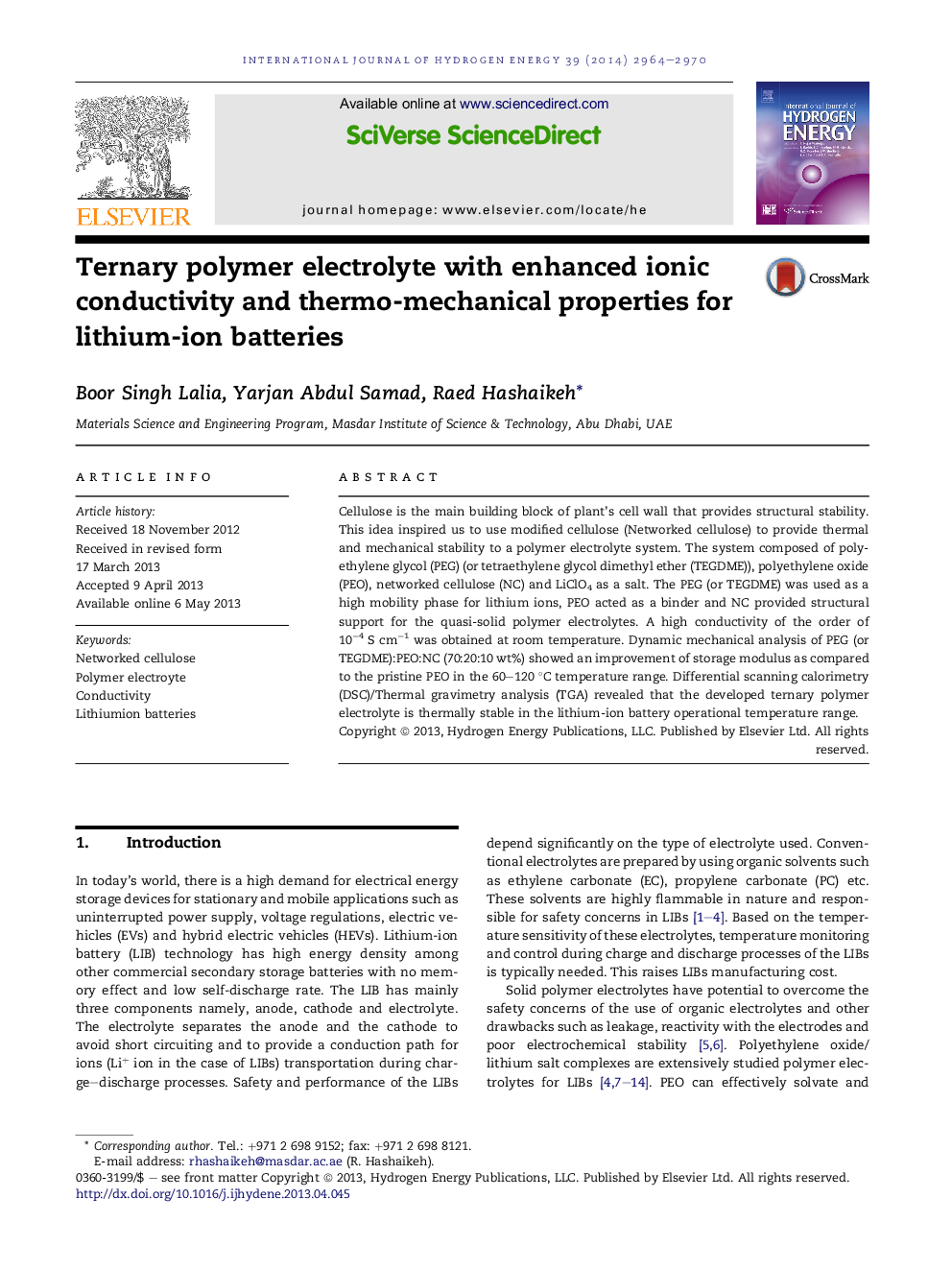| Article ID | Journal | Published Year | Pages | File Type |
|---|---|---|---|---|
| 7720724 | International Journal of Hydrogen Energy | 2014 | 7 Pages |
Abstract
Cellulose is the main building block of plant's cell wall that provides structural stability. This idea inspired us to use modified cellulose (Networked cellulose) to provide thermal and mechanical stability to a polymer electrolyte system. The system composed of polyethylene glycol (PEG) (or tetraethylene glycol dimethyl ether (TEGDME)), polyethylene oxide (PEO), networked cellulose (NC) and LiClO4 as a salt. The PEG (or TEGDME) was used as a high mobility phase for lithium ions, PEO acted as a binder and NC provided structural support for the quasi-solid polymer electrolytes. A high conductivity of the order of 10â4 S cmâ1 was obtained at room temperature. Dynamic mechanical analysis of PEG (or TEGDME):PEO:NC (70:20:10 wt%) showed an improvement of storage modulus as compared to the pristine PEO in the 60-120 °C temperature range. Differential scanning calorimetry (DSC)/Thermal gravimetry analysis (TGA) revealed that the developed ternary polymer electrolyte is thermally stable in the lithium-ion battery operational temperature range.
Keywords
Related Topics
Physical Sciences and Engineering
Chemistry
Electrochemistry
Authors
Boor Singh Lalia, Yarjan Abdul Samad, Raed Hashaikeh,
